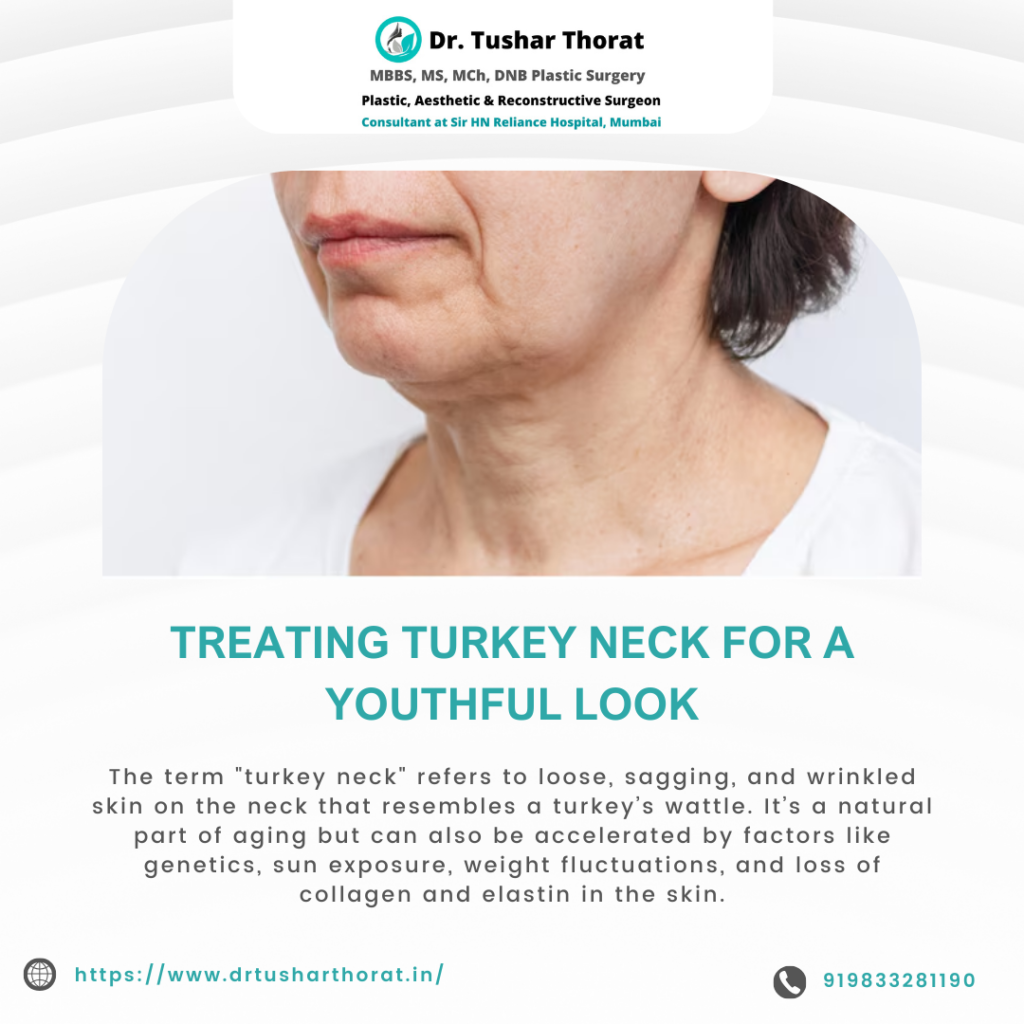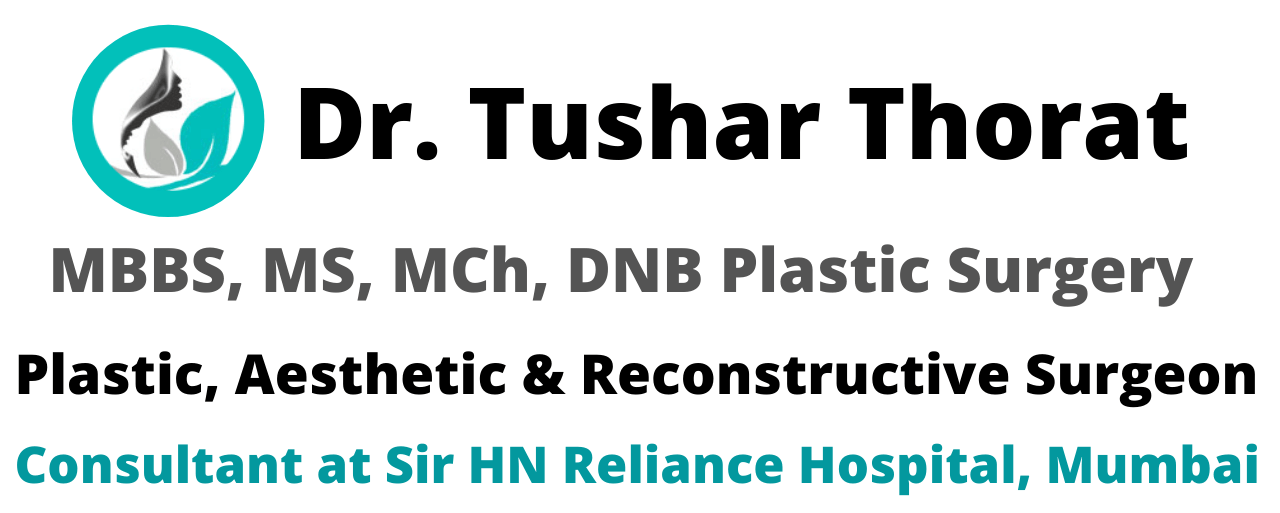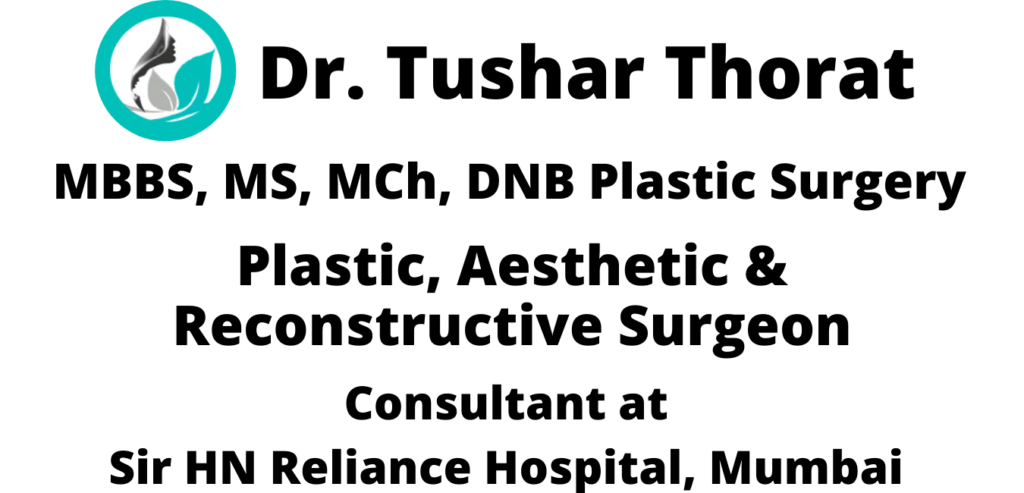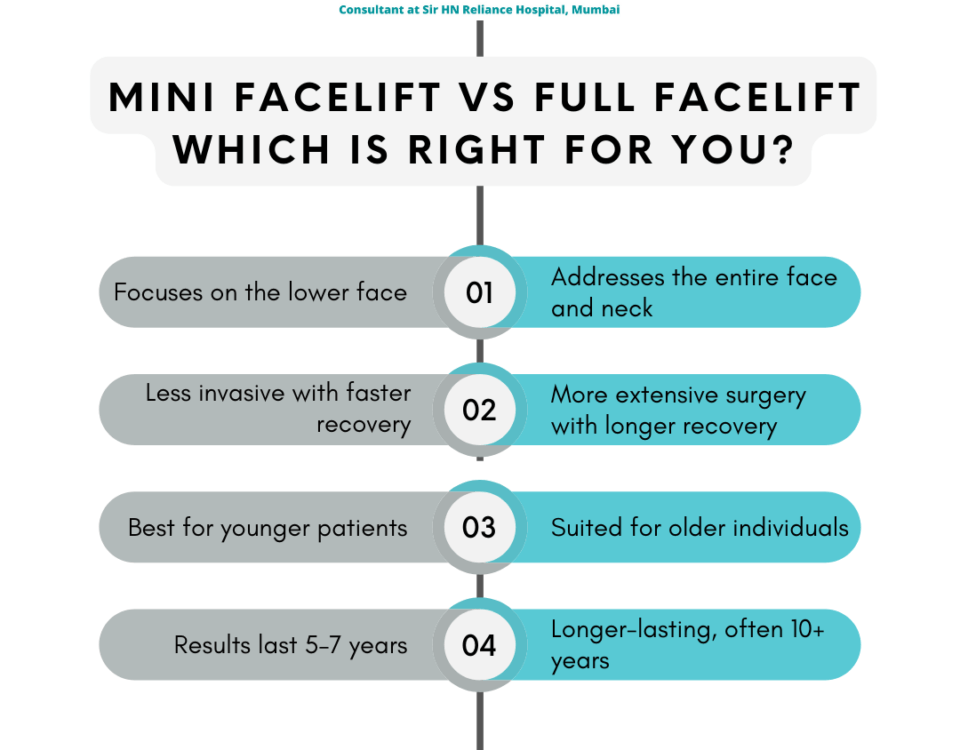As we age, many visible changes occur in our bodies — especially around the face and neck. One of the most common concerns patients share with cosmetic surgeons like Dr. Tushar Thorat is something called a “turkey neck.” But what exactly is it? Why does it happen? And more importantly, how can it be treated effectively?
Let’s dive deeper into understanding this common aging sign and explore modern solutions to restore a youthful neck profile.

What Is Turkey Neck?
The term “turkey neck” refers to loose, sagging, and wrinkled skin on the neck that resembles a turkey’s wattle. It’s a natural part of aging but can also be accelerated by factors like genetics, sun exposure, weight fluctuations, and loss of collagen and elastin in the skin.
Over time:
- The muscles supporting the neck weaken.
- The skin loses elasticity.
- Fat deposits can create a drooping appearance.
For many, this change can feel frustrating because it affects the overall facial silhouette, making people appear older or tired even if they feel energetic inside.
Common Causes of Turkey Neck
Several factors contribute to the development of a turkey neck:
- Aging: Collagen and elastin breakdown is inevitable with age.
- Genetics: If your parents or grandparents had sagging neck skin, you might too.
- Sun Damage: UV rays weaken skin fibers, leading to premature sagging.
- Weight Loss: Sudden or major weight loss can leave behind excess skin.
- Poor Posture: Tech neck (looking down at screens) can weaken neck muscles over time.
How Is Turkey Neck Treated?
Fortunately, there are multiple treatment options available today, depending on the severity of the condition and the desired results. Let’s break it down:
1. Non-Surgical Treatments for Mild to Moderate Cases
If your turkey neck is just starting to develop or if you prefer non-invasive options, these might be right for you:
-
Ultherapy:
Uses ultrasound energy to stimulate collagen production deep under the skin, tightening and lifting naturally over time. -
Radiofrequency (RF) Treatments:
RF energy heats the tissues beneath the skin, encouraging collagen rebuilding. -
Injectable Treatments:
Fillers can sometimes be used to provide structural support, and Botox can relax certain neck muscles that cause banding. -
Laser Skin Tightening:
Laser therapies can resurface the skin, improving texture and tightening mild sagging.
2. Surgical Treatments for Severe Turkey Neck
When the sagging is more significant, non-surgical options may not provide enough improvement. Surgical solutions can offer more dramatic and longer-lasting results:
-
Neck Lift (Platysmaplasty):
A neck lift tightens loose muscles and removes excess skin to restore a smoother, more defined neck. -
Liposuction:
If excess fat is contributing to the droop, liposuction alone or combined with a neck lift can create a better contour. -
Lower Facelift:
In some cases, a lower facelift is combined with a neck lift to address sagging around the jawline and neck simultaneously.
Can Exercises or Home Remedies Help?
Some people wonder if neck exercises can get rid of turkey neck. While exercises might strengthen the underlying muscles, they won’t tighten loose skin or remove excess fat significantly.
Popular searches like “best exercises for turkey neck” might bring up tips like chin tucks, neck stretches, and resistance exercises, which can be part of a healthy routine but won’t substitute for professional treatments if sagging is prominent.
Similarly, home remedies (like applying oils or doing massages) might improve skin texture slightly but are not a cure for moderate to severe turkey neck.
When Should You Consult a Specialist?
If you are noticing:
- Visible sagging or banding under the chin,
- Loss of jawline definition,
- Wrinkled or droopy neck skin,
…it’s a good idea to consult with an expert like Dr. Tushar Thorat.
A thorough evaluation can help determine:
- The degree of skin laxity,
- Whether fat deposits are present,
- The best personalized treatment plan — surgical or non-surgical.
Remember, early intervention often means less invasive procedures are needed!
FAQs About Turkey Neck
Q: Can turkey neck be prevented?
A: While aging is inevitable, you can slow down turkey neck development by practicing sun protection, maintaining a healthy weight, avoiding smoking, and using quality skincare products.
Q: Is neck lift surgery painful?
A: Modern surgical techniques combined with proper anesthesia and recovery support make the procedure quite comfortable. Some mild swelling and bruising are normal post-surgery.
Q: How long do the results of neck treatments last?
A: Non-surgical treatments might need maintenance yearly, whereas surgical options like a neck lift can last 10-15 years with good care.
Q: What is the recovery time for a neck lift?
A: Most patients return to normal activities within 2 weeks, but complete healing may take a few months.
You Don’t Have to Live with Turkey Neck
Feeling self-conscious about your neck should not be something you simply accept. Today’s safe, advanced treatments can significantly restore confidence and create a more youthful appearance.
If you’re curious about which treatment is right for you, schedule a consultation with Dr. Tushar Thorat — a trusted cosmetic surgeon specializing in natural-looking facial rejuvenation.
Ready to say goodbye to sagging neck skin?
Book your personalised consultation with Dr. Tushar Thorat today!






